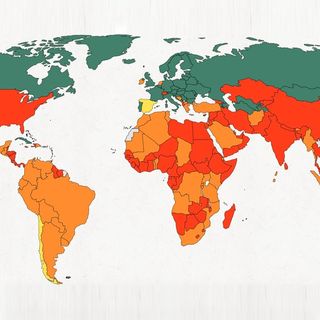
Parents’ Device Use Can Start Cycle of Attention‑Seeking Behavior in Kids
Maybe kids aren’t the ones who need screen time rules?

There’s a lot competing for parents’ attention these days. And as our work, our domestic responsibilities, Netflix, and social media compete to occupy our downtime, kids are sometimes feeling the brunt of our short attention spans and digital distraction.
Unfortunately, parents who use screen time to decompress, take a break, or even to stay on top of work could be kickstarting a cycle of potentially negative behavior in their children, according to a new study. Brandon T. McDaniel, of Illinois State University, and Jenny S. Radesky, of the University of Michigan Medical School, recently published the results of a study showing that so-called “technoference” can lead children to show more frustration, hyperactivity, whining, sulking or tantrums. The study, published in the journal Pediatric Research, examines the role and impact digital devices play in parenting and child behavior.
TV, laptops, tablets, and phones are increasingly encroaching on our attention spans. The problem, according to the authors, is that, because of their portability, these devices are always around and are particularly easy to use during family downtime, such as meals, baths, playtime, and bedtime — all important times for shaping a child’s social and emotional well-being. When parents are on their devices, research shows that they have fewer conversations with their children and are more hostile when their kids try to get their attention.
In this study, 172 two-parent families with children under 5 answered online questionnaires (importantly, one drawback of this approach is that the results reflect self-reporting only). But participants did report on how often devices interrupted their conversations or activities with their children, and how easily upset or frustrated their children were, in addition to information that painted a picture of parents’ own feelings of stress and anxiety.
In almost all cases, one device or more intruded in parent-child interactions at some stage during the day. And while technology may serve as a refuge for parents who have to cope with difficult child behavior, the survey results showed that this tactic had its drawbacks. Electronic device use likely deprives parents of the opportunity to provide meaningful emotional support and positive feedback to children, which causes kids to revert to problematic behavior, such as throwing tantrums or sulking. This only added to parents’ stress levels, likely leading to more withdrawal via technology, exacerbating a possibly endless cycle.
“These results support the idea that relationships between parent technoference and child externalizing behavior are transactional and influence each other over time,” says McDaniel. “In other words, parents who have children with more externalizing problems become more stressed, which may lead to their greater withdrawal with technology, which in turn may contribute to more child externalizing problems.” And children, who may be frustrated by vying for their parents’ attention, only act out further in a bid to get the attention they crave.
Our relationships with devices are increasingly complex and fraught. But we do know that the makers of our devices, apps, and content are designing them specifically to capture and hold our attention. If this comes at the cost of giving children the quality, uninterrupted attention they need to form long-lasting feelings of mutual support and love, that may be one reason to start setting rules for ourselves about screen time.
Related


What Beauty Is At 57
